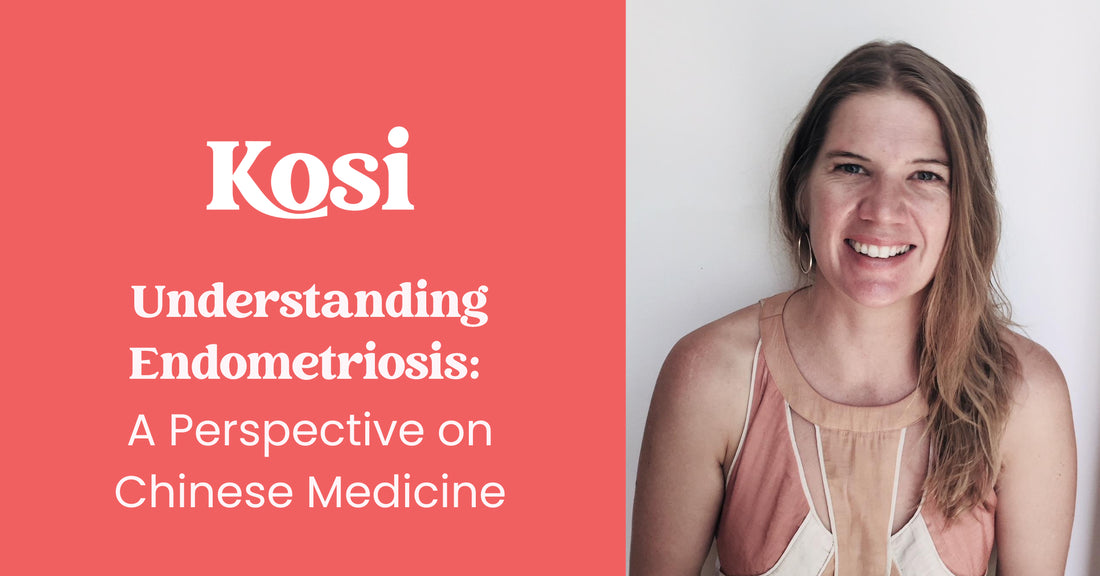Endometriosis is a condition that affects many women, causing significant pain and discomfort. In this article, we will explore endometriosis from a perspective of Chinese medicine, shedding light on its underlying causes and potential treatment approaches. Practitioners of Chinese medicine recognise the importance of blood circulation and the balance of heat and yang energy in maintaining optimal health. Understanding these concepts can provide valuable insights into managing endometriosis symptoms.
Endometriosis and Blood Stagnation:
According to Chinese medicine, endometriosis is often associated with blood stagnation in the pelvic region. Blood stagnation occurs when the flow of blood becomes sluggish or blocked, leading to pain, inflammation, and the formation of abnormal tissues. In the case of endometriosis, these abnormal tissues are found outside the uterus, causing pain during menstruation and other symptoms.
Heat and Yang Deficiency:
Chinese medicine also emphasises the role of heat and yang energy in maintaining healthy blood circulation. Heat and yang are considered active, warming, and invigorating forces within the body. When there is a deficiency of heat and yang, the movement of blood may become compromised, leading to stagnation. This deficiency can result from various factors, including lifestyle, diet, and constitution.
Clinical Presentation and Warmth:
In clinical practice, it is common to observe that patients with endometriosis often feel cold. This sensation of coldness can manifest as chilly extremities or abdomen, a preference for warm environments, and sensitivity to cold temperatures. According to Chinese medicine, warming the body can help alleviate blood stagnation and reduce pain associated with endometriosis.
The Role of Warm Food and Drinks:
To manage endometriosis from a Chinese medicine perspective, incorporating warm foods and drinks into the diet is recommended. Warm foods, such as soups, stews, and herbal teas, can help promote circulation, support the body's warmth, and enhance overall vitality. These foods are believed to counteract the coldness and stagnation often experienced by individuals with endometriosis.
Keeping Feet and Abdomen Warm:
Another practical approach in Chinese medicine is to ensure that the feet and lower abdomen, where the uterus resides, are kept warm. Cold temperatures can exacerbate blood stagnation and increase discomfort. Wearing warm socks or slippers, using heating pads, or applying warm heat or compresses to the lower abdomen can help improve blood flow, ease pain, and provide relief.
Research on Chinese Medicine for Endometriosis:
There is an increasing body of research examining the effectiveness of Chinese medicine in treating endometriosis. Numerous reviews have analysed trials assessing the impact of Chinese medicine and acupuncture on pain reduction, ovarian function, recurrence rates, and pregnancy rates in individuals with endometriosis. Randomised controlled trials have also explored the use of Chinese medicine to prevent recurrence and enhance pregnancy rates after surgical intervention. Additionally, acupuncture has been studied for its effect on dysmenorrhoea (painful periods), which is crucial to address in Chinese medicine for promoting overall well-being.
The Role of Acupuncture:
Acupuncture, when combined with usual care, has shown promise in reducing pelvic pain associated with endometriosis. A study involving 30 women aged 18-45, diagnosed with endometriosis, demonstrated that twice-weekly acupuncture sessions for eight weeks significantly reduced pelvic pain compared to usual care alone. The acupuncture group experienced a 42% reduction in pelvic pain after eight weeks, surpassing the minimum clinically important difference threshold. In contrast, the usual care group experienced a 6% increase in pelvic pain over the same period.
Further research and clinical trials are important to explore the potential benefits of Chinese medicine and acupuncture in the treatment of endometriosis.
By incorporating these practices into comprehensive care plans, we can improve the well-being and quality of life for women with endometriosis. It is recommended to consult with qualified practitioners of Chinese medicine for personalised advice and tailored treatment options.

PELVIC PAIN

From baseline in the acupuncture group there was a 42% reduction in pelvic pain after eight weeks (16 acupuncture sessions).
From baseline in the usual care group there was a 6% increase in pelvic pain after eight weeks.
Twice weekly acupuncture treatment reduces pelvic pain over the threshold for the minimum clinically important difference (20% reduction) and this occurs within 4 weeks of treatment and pain continues to decrease through eight weeks.




